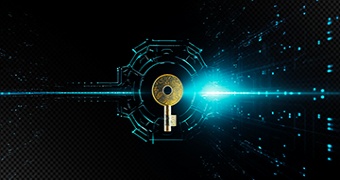We are living in a world where artificial intelligence (AI) is transforming eve....
Documentation Hierarchy based on ISO 14001

ISO 14001 is the most known international standard for environmental management systems (EMS) and one of the most adopted standards. Designed to be applied through numerous sectors, implementing ISO 14001 offers organizations several benefits. The standard provides a structured framework to improve environmental performance while ensuring compliance with environmental policies and procedures.
The Role of Documentation in an EMS
A well-designed Environmental Management System (EMS) requires organizations to develop a detailed documentation process to collect, analyze, register, and retrieve information efficiently. One of the most essential components of EMS implementation is the development of a documentation and record control system based on ISO 14001.
Implementing such a system allows organizations to standardize how documents and records are created, published, updated, withdrawn, and used. While ISO 14001 defines the necessary documentation, it also allows organizations the flexibility to modify documentation based on their specific requirements.
Key Documents Required for ISO 14001 Compliance
Before creating EMS documentation, organizations must first understand the purpose and use of each document type within the documentation framework.
ISO 14001 documentation typically includes:
- Policies
- Manuals
- Procedures
- Work Instructions
- Guidelines or Standard Operating Procedures (SOPs)
- Records and Forms
During ISO 14001 implementation, organizations often start with documentation, which may cause uncertainty regarding prioritization. The easiest way to determine document hierarchy is by evaluating:
- Who writes the document
- Who the document is intended for
- What purpose the document serves
For instance, documents created by top management (e.g., policies) have a higher position in the hierarchy, whereas documents filled out by employees (e.g., records) are positioned lower.
Structuring EMS Documentation Based on ISO 14001
According to ISO 14001, organizations are required to develop certain key documents to conform to the standard.

Structuring EMS Documentation for Maximum Efficiency
Ensuring a well-structured and effective EMS requires documentation to follow a clear format.
-
EMS Policy
- The EMS policy acts as a central document, defining the organization's environmental commitments and serving as a reference for all other EMS documents.
- Usually developed by top management, the policy provides the foundation for setting EMS objectives and maintaining compliance.
-
EMS Manual (Optional but Beneficial)
- Although ISO 14001:2015 does not require an EMS manual, many organizations create one to outline the EMS scope, essential components, and their interconnections.
- Certification bodies often request this document first during audits.
-
Procedures
- Procedures define how specific EMS activities are carried out.
- These can be presented in various formats, including written descriptions, flowcharts, or visual diagrams.
-
Key components of procedures typically include:
- Title
- Purpose
- Scope
- Responsibilities and Authorities
- Description of Activities
-
Work Instructions, Guidelines, and SOPs
- Work instructions offer precise, step-by-step guidance for specific tasks, minimizing the risk of nonconformities.
- These instructions may exist as independent documents or be incorporated within procedures.
-
Records and Forms
- Records and forms act as proof that processes are carried out as planned.
- While employees mainly complete these documents, certain records also require input from top management.
- Proper record maintenance is essential for EMS efficiency and regulatory compliance.
Managing EMS Records and Forms
An organized record-keeping system ensures EMS effectiveness. The process involves:
- Identification of Records and Forms
- Proper Storage
- Protection Against Loss or Damage
- Easy Retrieval
- Retention Period Compliance
- Secure Disposal
- Ensuring Legibility
- Maintaining Identifiability
- Ensuring Traceability
Why Proper Documentation Matters
Properly structured EMS documentation makes daily operations more efficient, whereas poorly managed documentation can result in compliance risks and operational inefficiencies.
Adopting ISO 14001 necessitates a clear, well-organized documentation system customized to an organization's requirements. Effective documentation and record management enhance environmental performance, regulatory adherence, and operational efficiency.
Proper documentation is important for audits, as it provides structured and reliable records that confirm compliance with ISO 14001 standard. It enables auditors to evaluate whether environmental management processes are being properly implemented. Clear and organized documentation enhances transparency, minimizes inconsistencies, and simplifies the tracking of corrective actions. Moreover, it helps in identifying gaps, potential risks, and areas for improvement, ensuring more effective and efficient audits.
How PECB Supports You in Successfully Implementing ISO 14001
PECB training courses provide detailed instruction on ISO 14001 requirements, equipping you with the knowledge needed for certification. These training courses help you navigate audits with confidence while ensuring compliance with environmental management best practices.
To support the implementation of ISO 14001 effectively, PECB offers various training courses, including:
About the author
Vesa Hyseni is a Senior Content and Campaigns Specialist at PECB. She is responsible for creating up-to-date content, conducting market research, and providing insights about ISO standards. For any questions, feel free to reach out to her at support@pecb.com.


